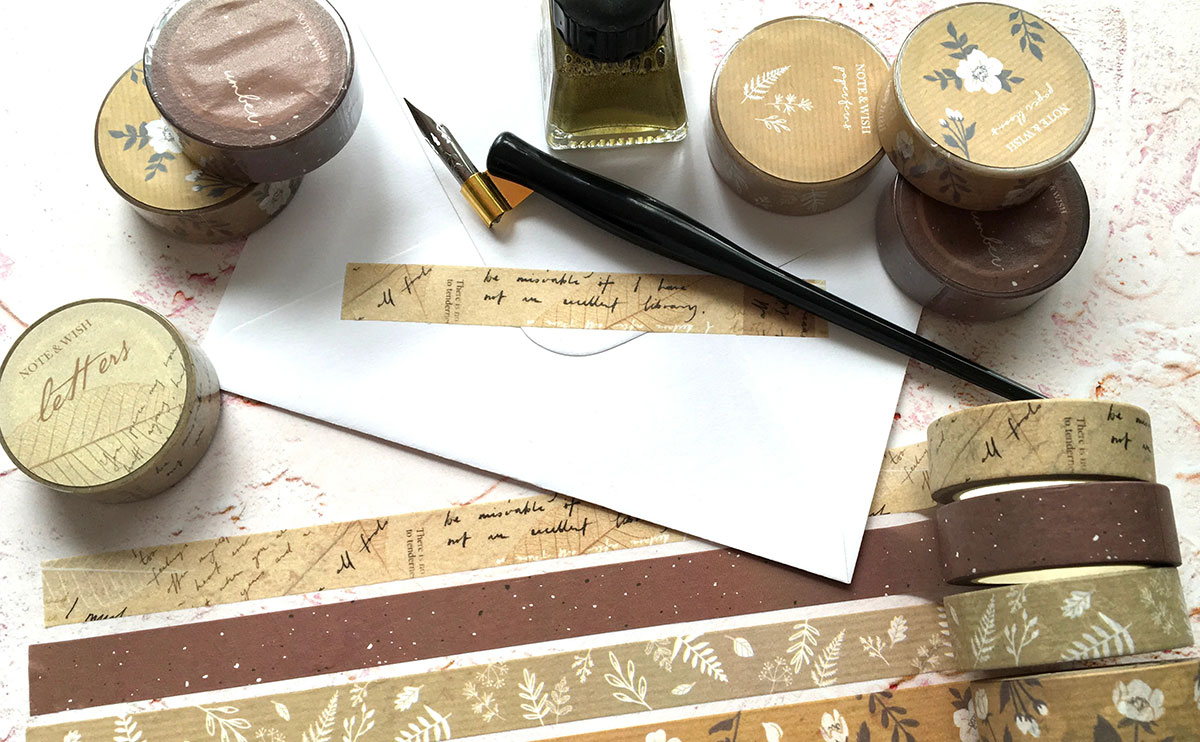In the world of arts and crafts, few inventions have captured the hearts of creators and enthusiasts quite like washi tape. These vibrant, versatile tapes have become an essential tool in the hands of crafters, adding a touch of magic to projects of all kinds. But have you ever wondered about the intriguing history behind these decorative wonders? Join us on a journey through time as we explore the fascinating origins and evolution of washi tapes.
Origins: Unveiling the Art of Washi Paper.
Washi tape owes its existence to the ancient art of washi papermaking, which dates back over a thousand years in Japan. Washi paper, traditionally crafted from natural fibers such as mulberry bark, was renowned for its exceptional durability and texture. It became an integral part of Japanese culture, utilized in various forms of art and communication.
The Birth of Decorative Tape:
While washi paper was cherished for its traditional use, it was not until the 20th century that its creative potential truly blossomed. In the 1920s, a small-scale adhesive tape began to gain popularity in Japan due to its reusability and ability to stick to various surfaces. This early version of washi tape was primarily used for practical purposes.
The Crafty Evolution:
It was not until the 1980s that washi tape began to take on its decorative persona. As crafting and DIY culture gained momentum, artists and crafters started to experiment with washi paper, turning it into an adhesive tape adorned with intricate patterns, colors, and designs. This shift from utility to artistry marked the birth of modern washi tapes as we know them today.
Global Spread and Popularity By the early 2000s, washi tape had crossed cultural borders and gained recognition on a global scale. Crafters around the world embraced the versatility and charm of these decorative tapes, incorporating them into various projects, from scrapbooking and journaling to home décor and gift wrapping.


The Crafty Evolution:
It was not until the 1980s that washi tape began to take on its decorative persona. As crafting and DIY culture gained momentum, artists and crafters started to experiment with washi paper, turning it into an adhesive tape adorned with intricate patterns, colors, and designs. This shift from utility to artistry marked the birth of modern washi tapes as we know them today.
Global Spread and Popularity By the early 2000s, washi tape had crossed cultural borders and gained recognition on a global scale. Crafters around the world embraced the versatility and charm of these decorative tapes, incorporating them into various projects, from scrapbooking and journaling to home décor and gift wrapping.
Endless Creativity:
The Modern Era In the present day, washi tapes have evolved into a medium of boundless creativity. Artists and crafters continue to explore new techniques, combining washi tape with other materials to create intricate patterns, vibrant designs, and stunning visual effects. The array of colors, patterns, and sizes available allows for endless possibilities, ensuring that each creation is as unique as the individual crafting it.
The journey of washi tapes from traditional Japanese paper to globally beloved crafting marvels is a testament to the power of creativity and innovation. As we admire our washi tape-adorned projects, let’s take a moment to appreciate the rich history and culture that have shaped these colorful, adhesive works of art. Whether used for self-expression, decoration, or preservation of memories, washi tapes continue to weave their magic into the creative landscape, inspiring artists and crafters to explore and imagine beyond boundaries.

